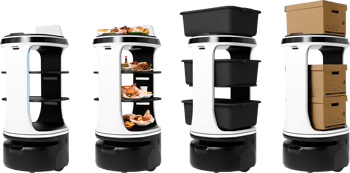Earth Day is an opportunity to think about how we can take individual and collective action to protect and preserve our planet. But for restaurants, sustainability also represents a tremendous opportunity to protect and preserve your bottom line.
Naturally, any time you can help the environment and improve your restaurant’s performance, that’s a good thing. And today, a growing number of restaurant technology vendors are focused on helping your restaurant do both.
So in celebration of Earth Day, we’re highlighting some of our favorite tech-based solutions for helping you run a more eco-friendly restaurant.
5 Ways to Improve Restaurant Operations Sustainability
According to R365’s 2025 State of the Restaurant Industry report, the following are the top restaurant sustainability trends.
1. Track Food Waste
R365 reports that just over 30% of restaurants are already actively taking steps to improve food waste tracking. The ways restaurants waste food include spoilage, overstocking, and over-portioning. But many restaurants struggle to track and quantify these sources of waste.
Monitoring food waste makes it possible to identify the patterns that are causing this waste. It also helps you manage portion sizes more strategically and prevent the inventory mistakes that lead to spoilage.
The right technology can not only do this tracking, it can also help you figure out exactly where the waste is occurring. Is the culprit is uneaten portions, expired ingredients, or inefficient prep?
MarketMan offers a cloud-based restaurant management system that reduces waste by:
- Streamlining inventory management
- Providing data on advance sales, menu, and purchasing
- Identifying actionable ways to reduce food cost.
These features can help you adjust inventory ordering, tweak the ingredients used in certain recipes, and reconsider portion sizes around customer ordering habits. All of these strategies can help you reduce the amount of food that ends up in the trash.
2. Forecast Demand for More Precise Ordering
According to R365, just under 30% of owners say they are focused on improving restaurant sustainability by forecasting future demand. You need accurate forecasting to plan orders and make informed decisions about your purchases. But it requires a careful analysis of three things: sales data, seasonal trends, and customer behavior.
Together, this information can help you minimize waste by ordering only what you need. But how exactly do you get the data? DYNE makes it easy to do all of this, even if you’re not the most tech savvy user. It collects and analyzes the numbers you need to track: your customer profiles, sales data, menu items, inventory costs, and staffing information.
Then, it uses those results to forecast future demand more precisely — along with tips on how to fine-tune your menu to minimize inventory requirements. Ultimately, this means you can do a better job of ordering accurately, which means you can reduce the waste caused by overstocking, expiration, and spoilage.
3. Improve Waste-Reduction Training for Staff
A major part of improving your restaurant's sustainability is changing the way you do things, in order to improve efficiency and reduce waste in food prep and serving. This requires beefing up your staff training.
According to R365, nearly 20% of restaurants are taking steps to improve sustainability through targeted staff training of both back-of-house and front-of-house staff.
Back-of-house staff can be a part of your sustainability efforts by learning better techniques for food preparation, ingredient usage, and food storage. This helps reduce the amount of discarded material in the kitchen.
And when you give front-of-house staff the flexibility to recommend dishes and portions that match what (and how much) customers want to eat, it helps reduce the amount of uneaten food left behind in the dining room.
A number of leading tech providers can make it easier to incorporate restaurant sustainability into your training program. For instance, Opus is a training content builder that can transform your SOPs (standard operating procedures) into guided training and make them accessible to staff members through an easy-to-use mobile app.
Opus includes:
- A resource library with centralized storage so employees can quickly access training materials and information
- Message blasts so you can communicate updates directly to staff members
- A learning management system (LMS) that can be customized to personalize your employee training program around your restaurant’s unique sustainability needs and goals
4. Use Eco-Friendly Packaging and Materials
Only about 10% of restaurants report that they’ve taken steps to use more sustainable packaging and materials. The use of single-use containers, straws, and cutlery can have a huge environmental impact. Plastic and Styrofoam materials are especially damaging to the environment.
But you can reduce what your business sends to the landfill by opting for eco-friendly packaging made from materials such as bamboo, paper, and glass. Explore alternatives to plastic wherever you’re using single-use products, including delivery packages, take-home containers, and in-house dining.
5. Buy From Local Sources
One of the most effective restaurant sustainability trends is local sourcing. By identifying local sources for ingredients, you not only reduce the carbon footprint associated with transporting goods long distances, but you can also support local farmers, food producers, and suppliers.
This strategy comes with a few pretty meaningful benefits. First and foremost, local sourcing means you have the opportunity to serve your diners fresher seasonal ingredients; to highlight menu items that celebrate local culture; and to build powerful relationships with independent suppliers.
Local sourcing is also a significant draw to customers, who tend to associate this approach with higher quality ingredients and more thoughtfully curated recipes.
A full-service inventory management system like Piecemeal can help you reevaluate your food supplier relationships. Piecemeal includes features such as recipe costing with ingredient-level pricing, menu analysis for profitability insights, and detailed food cost and savings reports.
Use these resources to evaluate and shift your supplier relationships. And once you’ve initiated relationships with new local suppliers, Piecemeal makes it easy to integrate all of your suppliers into a single streamlined ordering system.
This, along with real-time inventory tracking, automated reordering, and continuous waste monitoring, makes Piecemeal a great option for onboarding and managing local supplier relationships.
How Industry Leaders Are Using Tech To Make Restaurants Eco-Friendly
Restaurant technologies are evolving at a rapid pace. Ongoing developments in areas such as AI, automation, and robotics are leading to all kinds of opportunities for improved sustainability.
To stay on top of these trends and find out how your competitors are already leveraging this cutting edge technology, sign up for the Back of House newsletter and get weekly updates sent directly to your inbox!





